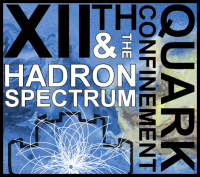Speaker
Description
ALICE (A Large Ion Collider Experiment) is studying the physics of strongly interacting matter, and in particular the properties of the Quark-Gluon Plasma (QGP), using proton-proton, proton-nucleus and nucleus-nucleus collisions at the CERN LHC (Large Hadron Collider). The ALICE Collaboration is preparing a major upgrade of the experimental apparatus, planned for installation in the second long LHC shutdown in the years 2019-2020. A key element of the ALICE upgrade is the construction of a new, ultra-light, high-resolution Inner Tracking System (ITS). With respect to the current detector, the new ITS will significantly enhance the determination of the distance of closest approach to the primary vertex, the tracking efficiency at low transverse momenta, and the read-out rate capabilities. This will be obtained by seven concentric detector layers based on a Si (50 $\mu m$ thick) CMOS pixel sensor with a pixel size of about 30x30 mu$^2$. A key feature of the new ITS, which is optimized for high tracking accuracy at low transverse momenta, is the very low mass of the three innermost layers, which feature a material thickness of 0.3% X0 per layer. This contribution presents the design goals and layout of the new ALICE ITS, with focus on the technical implementation of the main detector components, and the projected detector and physics performance.
